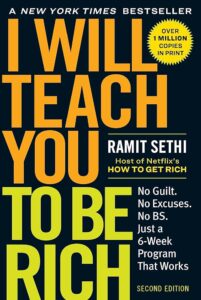
I Will Teach You to Be Rich: No Guilt. No Excuses. Just a 6-Week Program That Works (Second Edition)
Chapter 5: Save While Sleeping
by DenzelleChapter 5 of the book emphasizes the transformative potential of automating your personal finances, presenting it as a foundational strategy to help you save while sleeping and achieve long-term financial success. The author uses relatable anecdotes, such as managing a flood of emails or applying for scholarships, to highlight the benefits of efficiency. Automation, in this context, is described as a system that works tirelessly in the background, allowing you to build wealth effortlessly while focusing on other aspects of life.
The automation process builds on the Conscious Spending Plan introduced in an earlier chapter, ensuring that funds flow automatically to checking accounts, savings, credit card payments, and investments according to predetermined priorities. This eliminates the need for manual management, reducing errors and stress while optimizing savings and investments. Real-life stories, like those of Jenna Christensen and Lisa Lunsford, demonstrate how automation led to reduced financial anxiety and noticeable growth in their savings accounts, proving its practicality and effectiveness.
The chapter tackles common fears surrounding automation, such as concerns about losing control over finances or the belief that automation only works for people with ample disposable income. These “invisible scripts,” as the author calls them, are internalized myths that hold individuals back from leveraging automation’s benefits. By breaking down these misconceptions, the chapter shows how even those with limited income can implement simple systems to ensure consistent savings and investments.
A detailed guide walks readers through setting up an automated financial system step-by-step. This includes scheduling account transfers, setting savings goals, and ensuring contributions to investment accounts occur automatically. The process is designed to be adaptable, giving readers the confidence to take control of their finances without the burden of constant monitoring.
For those with irregular income, such as freelancers or gig workers, the author provides a tailored approach. This includes creating a buffer fund to manage fluctuations and setting flexible transfer schedules based on cash flow. By accommodating unique financial circumstances, the system ensures stability and growth, even in unpredictable situations.
Automation isn’t a “set it and forget it” system; the author emphasizes the importance of periodic reviews to ensure it aligns with changing circumstances. Life events such as a new job, marriage, or a change in financial goals may require adjustments to automated flows. Regular check-ins keep the system dynamic and ensure that it remains a reliable tool for achieving financial milestones.
Beyond the mechanics, automation is presented as a way to align your financial life with your values and priorities. By eliminating the stress of daily money management, individuals gain the freedom to focus on guilt-free spending in areas that matter most—whether it’s family, personal hobbies, or giving back to the community. This approach reframes finances not as a burden but as a tool for enriching life.
The chapter concludes by highlighting the broader impact of automation. It’s not just about saving time or money—it’s about creating a system that supports a richer and more fulfilling life. Automation empowers individuals to spend less time worrying about bills and more time enjoying meaningful experiences, achieving goals, and living according to their values.
In summary, Chapter 5 makes a compelling case for automating personal finances as a proactive and empowering strategy. By automating payments, savings, and investments, individuals can foster financial growth while reducing stress and decision fatigue. The chapter serves as both a practical guide and a motivational call to action, encouraging readers to take control of their finances with a system that works for them, not against them. Ultimately, automation is portrayed as more than a financial tool—it’s a means to live a life of freedom, purpose, and joy.


0 Comments